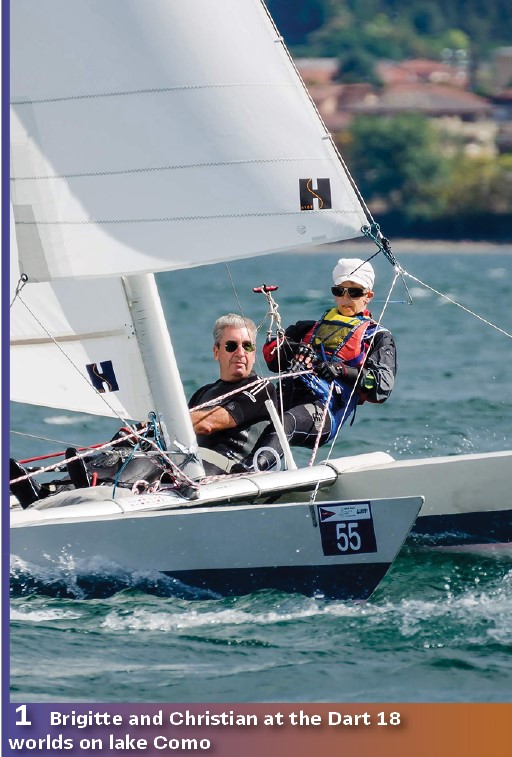
by Christian Brauner, OMICRON electronics GmbH, Austria
Summer is absolutely my favorite time of the year. The best place to be on a hot, sunny day is out on the water on board of a sailing boat.
Sailing is a sport that is open to people of any age or almost any fitness level. Sailing improves a wide range of physical and mental skills such as fitness, mental wellness, lower stress level, increased agility and concentration, improved organization and communication skills. And sailing is great fun.
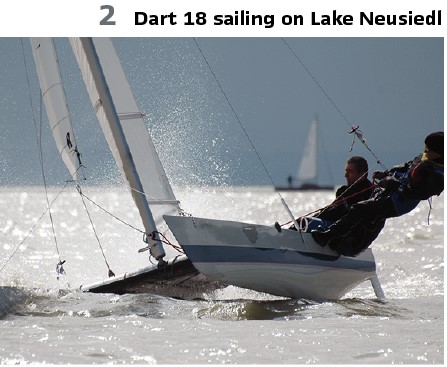
How did I start sailboat racing? I live in Austria, a country with high mountains but no access to the sea, and alpine skiing is our national sport. As a result, I started sailing quite late at the age of 25 when I joined SAT, the former Austrian energy automation company mainly active in the field of SAS, RTUs and SCADA systems. In 1988, I participated in SAT’s annual sailing week in the Adriatic Sea, at that time still a part of Yugoslavia. I got excited about sailing and soon obtained a sailing license, first for inland waters and later also for ocean sailing. Soon after that I bought my Dart 18 catamaran. With this boat but also with other one-design class boats, I sailed many regattas in the past 30 years on national as well as on international events.
The Dart 18 One-Design Class: The Dart 18 is a 5.5-meter-long glass-fiber catamaran to be sailed by one (without jib) or two persons and can achieve speeds of up to 20 knots. Sailing at such speeds with a small cat is a great fun, but very wet, so wearing a wetsuit or, in colder conditions, even a dry suit is a must. The Dart 18 was originally designed in 1975 by Rodney March/UK after he had created the Olympic Tornado catamaran. The Dart 18 has been built around 8.400 times until now and is based on strict one-design class rules. This means each boat must be made of identical components and in result boats are competitive almost irrespective of their age. That makes racing affordable compared to other boat classes which are based on “box rules” and require regular updates of hardware if you want to race competitively.

The one-design concept is very important here. It means that all participating teams can race directly against each other without a handicap system as typically used in regattas where different boat types are competing. One-Design racing gives you direct feedback about your skills in terms of boat handling, boat speed and tactics – any small error will be punished immediately by losing one or several positions during the race.

As the DART 18 is quite light, just 130 kg without crew, and easy to sail in any wind conditions of up to 20-25 knots, it can be sailed ideally by mixed crews as I do with my wife Brigitte. In several European countries the local Dart 18 Class organizations carry out regular national and international events, the annual highlight is the “Dart 18 Worlds” championship with typically 80-120 boats participating. The sailors at such championships are from 10 to 80+ years old and the Dart 18 community is an international family which enjoys competitive racing during the day and extensive partying in the evenings.
How does a regatta work? A common type of regatta is a series of races within one event, scored together to one final result. With every race, we get as many points as our place is in the race; first gets 1 point, second 2 points, etc. The boat with the lowest score at the end is the winner. Each race is started after a 5 minutes countdown and by passing an imaginary line between the race officer’s boat and a buoy. The course is setup by two or more buoys in upwind and downwind direction. The course must be sailed 2 or 3 times until the finish line, which is marked by the race officer’s boat and another buoy. The target time for a race is about 40-50 minutes for the first boat.
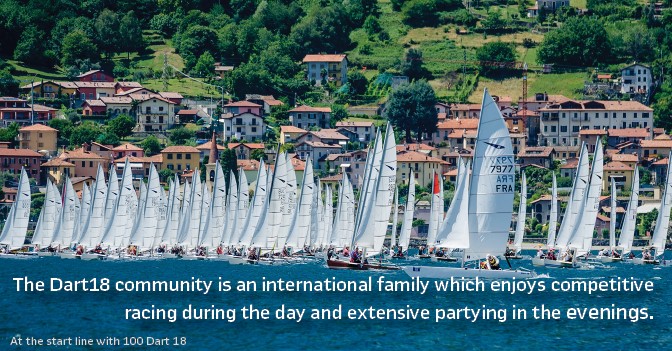
How does it feel to race at the Dart 18 world championship regatta? Exciting! The Dart 18 Worlds usually takes place at an outstanding sail location and 10 races are scheduled within one week. Already during the registration and boat measurement procedure before starting the first race, you can feel the building tension of the participants while on the other hand everybody enjoys meeting again lots of good old friends. The excitation level increases when slipping the boat into the water for the first race and culminates at the starting line, where 100 competitors basically follow the same idea: To pass the starting line at “zero” after the countdown with maximum speed, at the better side of the line and clear from other boats. Close boat sailing, maybe just centimeters away from the competitor’s boat, is normal at a regatta while being a total no-go in sailboat cruising. Nevertheless, regatta sailing is a comparably safe sport with very rare injuries and under the permanent supervision of the race officers and chase boats which quickly rescue crew and boats after a rare crash or – more frequent – after a capsize of a boat.

Each race on a Dart 18 can be a special experience – either because of a strong breeze, where physical fitness is required, or at light winds, when the mental conditioning is the trailing factor to success. In every case, after a long day out on the water with up to 3 completed races, everybody enjoys sharing their “racing adventures” with friends at the bar of the hosting sail club.
Why do we race sailboats? Sailboat racing requires a broad mix of skills: We need sailing and boat handling skills, a thorough understanding of wind and weather, knowledge of tactics, strategy and rules. We need specialized sail trimming technique, organizational skills to manage a crew, and analytical skills to grapple with lots of information. We need to be able to set goals and establish priorities, concentrate amidst chaos, ignore discomfort and learn from our mistakes.
Sounds like a mission impossible and in fact no one can master all those skills. So, the less mistakes we make, the better is our result at the end of the race, or the regatta series. But sailing appeal goes beyond these challenges. We enjoy racing for the chance to be out on the water, the thrill of working with the wind, for the challenge of competition and for the camaraderie it brings.
How to improve in regatta sailing? The building blocks of successful racing can be described in a hierarchical pyramid. Tactics lie at the top of the pyramid. Beneath tactics lies boat speed, and at the bottom, boat handling. In order to race successfully we must work our way up the pyramid. To win races, boat handling must be second nature, and our boat speed second to none.

Boat speed and boat handling are distinguished from tactics in several ways. For one, boat speed and boat handling are entirely within our control, while tactics involves factors of wind, current, and competitors which are decidedly beyond our control. Boat speed and boat handling, like a strong defense in soccer, will make us competitive every day. Tactics, like a lucky punch, is great when you’ve got it – but is not something you can count on day in and day out.
Boat speed and boat handling are distinguished from tactics in another way: Tactically there are opportunities for enormous gains and losses, particularly in shifty wind conditions. The gains and losses from boat speed and boat handling accrue much more subtly. Sure, we can lose plenty if we drop our spinnaker in the water and wrap it around your boat, but more commonly the gains are a few feet here, a boat length there. But they add up, and they are the margin of victory.
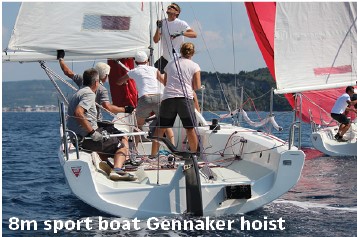
Boat handling: Except for single handed (1 person) boats, racing a sailboat is a team sport which involves a crew of two on the Dart 18 catamaran and already 8 persons on a 10-meter keelboat. As the racecourse consists of upwind and downwind legs as well as rounding marks, many maneuvers are required to get around the course. A Spinnaker jibe (change the course by turning the boat’s stern through the wind on a downwind leg) on the 10-meter boat engages all 8 crewmembers. Every member has a dedicated position and executes his sequence of actions, ideally fully synchronized with the other crewmembers. With every perfect jibe a boat can make a gain compared to the other boats. Crew organization, lots of practicing with tuning partners and good communication are key success factors.
Boat speed: Good boat speed is essential to successful racing. It is the technical aspect of sailing with (at most time of the race) the target to go as fast as possible towards the next mark. Here speed alone is not the goal; we use the term “velocity made good” (VMG) which is our speed vector pointing to the direction of the next mark, which normally cannot be reached directly without tacking or jibing. Maximum VMG is achieved mainly by adjusting the sail’s angle of attack (angle between apparent wind and sail’s cord), the sail’s depth and draft positions but also by other factors like boat heel, crew position and many others. Sail trim means controlling the sheets, halyards and other trim elements. But there is no single best setting for all wind and wave conditions – trim is a permanent exercise during the race for the helm, the trimmers, and also for the rest of the crew e.g. by hiking outboard during a gust as much as they can.
Strategy and tactics: Strategy is the overall race plan and is based on wind, expected wind shifts and current. Tactics means dealing with other boats and the rules in order to implement our strategy. Some examples?
Rules: Our rules are the Racing Rules of Sailing (RRS) which are periodically revised and published by the world sailing organization, and the sailing instructions of the regatta event. The better I understand the rules, the bigger is my tactical advantage during the race.
Starting strategy: The start of a sailboat race is one of the most exciting and demanding moments in sports. Starts require judgement, timing and teamwork but also close maneuvering and the ability to stay cool and concentrated in an environment packed with distractions. A good start, just after the start signal, at maximum speed, clear from other boats and on the favored side, is the key to winning a race.
Wind shifts: Wind shifts are another key element in every race. Wind never blows from one direction with one force, it is typically gusty, often oscillates around a dominant direction, is stronger on one side of the course. Correctly anticipating and noting such wind shifts and variations can easily bring an advantage of 10 boat length compared to a competitor who has gone a bit too far on the wrong side of the course.
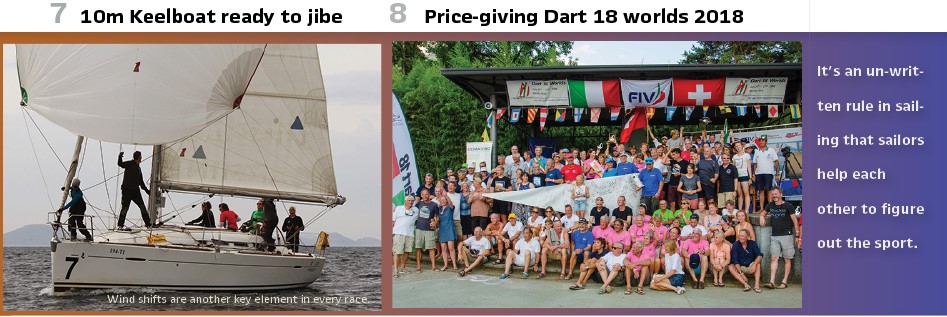
Some more reasons why I think, sailing is the best sport: It’s multidimensional. There are more factors to think about in sailing than any other sport. Somebody described sailing as playing chess with a firehose squirting at your face while running a marathon.
We’re playing in the natural world: Unlike gym sports, sailors compete in nature where the sunshine reflects off the waves and wind and spray re-style our hair. Whether we are sailing in big ocean waves or on lakes, we are immersed in a beautiful and wild environment that few people get to experience.
We can’t be benched or eliminated: Anyone can participate at a regatta and compete whether you are 12 or 75 or even 80! Unlike football or other contact sports, we can compete all our life.
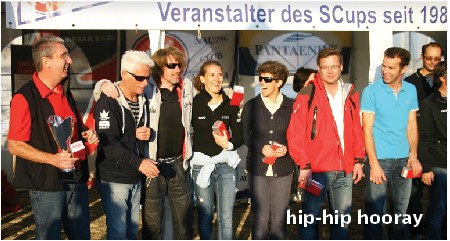
It’s thrilling: Believe me, there is no bigger rush than surfing down a wave with a sailboat planning over the water like a motorboat, and the risk of injury is comparatively very low.
Camaraderie: It’s an un-written rule in sailing that sailors help each other figure out the sport. Once a sailor, we share the same passion.
It’s a lifelong learning: Even the world’s best sailors learn new things every day as they sail.
See you on the water!
Biography:

Christian Brauner received his engineering degree in the field of communication technology. In the last 30 years he was employed by manufacturers of substation automation (SAS), control, protection and SCADA systems for electric utilities. He started his career as a technical sales expert in Austria with VA TECH SAT (now Siemens), later as sales manager with SPRECHER AUTOMATION. He has been involved in a variety of IEC 61850 related projects and frame contracts for large utilities all over Europe. Since 2018 he has been working for OMICRON Vienna as sales development manager. His special focus is on testing and monitoring products and solutions for substation automation systems.








